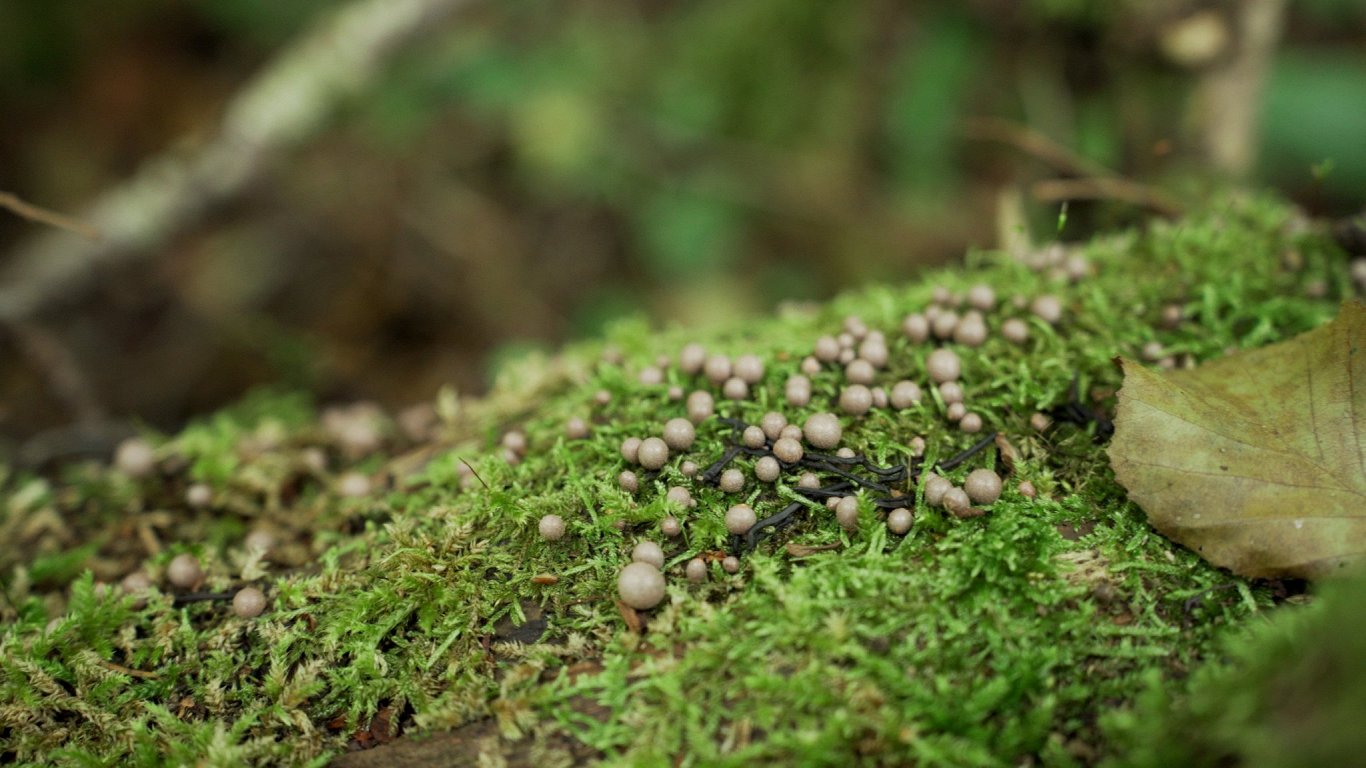So-called slime molds are neither plants, nor fungi, nor animals, as they have a completely different life cycle: "At the beginning of life, the visible stage of slime molds is the plasmodium, which is similar to raw egg white. It can move in response to light and moisture. When the plasmodium is young, it needs to feed in dark, moist places. It lives, for example, in cellars, where there are bacteria."
When the plasmodium is mature and ready to reproduce, it emerges in the sun and warmth and, like a fungus, matures into spores. "Then the spore gets to a wet, dark place, and a protozoa is born from it. This is the very beginning, which we cannot see with the eye. The protozoa and the fungus are such an interesting combination. That's why there is slime mold," says the researcher.
Research on slime molds in Latvia was neglected until recently, however, it has become very active in the last five years.
Until then, approximately 100 species of slime molds had been identified in Latvia, but 230 species were mentioned in a scientific article published last year. In addition, many species of slime molds that are rare in the world have been discovered here. Wolfsbane is one of the fairly common species in Latvia, but new species are currently being identified.

Slime molds can grow on the ground, on trees, and even on mushrooms.
There is a common slime mold that is popularly called witch's spit, or witch's butter.
"Why witches? Because they weren't there yesterday. Today they are already there. Who put them there? How can they suddenly appear? The witch is gone, and the butter is gone," Kluša explains.
That's the magic of slime molds. At first they are not visible with the eye, they are hidden, but the next day they are already visible. In addition, they can be yellow one day and green the next. The older and more diverse the forests are, the more useful slime molds will be in them, which serve as food and habitat for other organisms.
"Slime fungi are like an indicator of whether the forest is good, how diverse it is," emphasizes the naturalist.




























